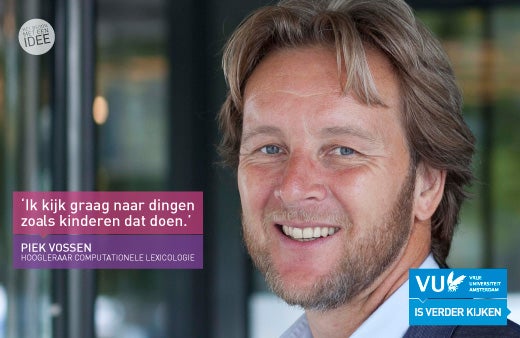Piek Vossen is a bit like a supercomputer himself. He is a linguist and a computer programmer, a disciplined researcher and an efficient project manager. He works hard and successfully on computers that have a thorough understanding of language.
It all started with Deep Blue, the chess computer that beat world champion Gary Kasparov in 1997. Then the computer Watson won the prestigious American quiz show Jeopardy against strong competition from two high-ranking human contestants in January 2011. The IBM supercomputer understands spoken language and answers complex questions quickly ... much better that Anna, the online computer-assistant that answers customers’ questions on the IKEA website, for example. What’s next?
Maybe a computerized agony aunt (or uncle). This intelligent avatar (you can choose the gender yourself) not only sympathetically listens to your problems but can also interpret your facial expressions, the tone and volume of your voice and really put you on track to findi a solution. Such supercomputers master all aspects of human communication, and give you all the attention you need at a reasonable price. That’s a very interesting option, in view of the growing pressure all healthcare workers undergo nowadays.
Piek Vossen (born 1960), Professor of Computational Lexicology in the Faculty of Arts at Vrije Universiteit Amsterdam, studies how computers can understand language. He believes it will take quite a long time before Windows offers a high-quality psychotherapeutic avatar as a standard app, but adds: “Researchers are making great advances in this field, investigating how computers interpret all kinds of human input from facial expressions and tone of voice to word choice and context. At a given moment it becomes possible to put all the pieces together. The visible results so far are mainly fringe applications with largely an entertainment value; the IKEA avatar is fairly primitive, for example. But if you’ve got the IT muscle of IBM and you understand the social aspects of language, you can get computers to communicate in an increasingly human way.”
